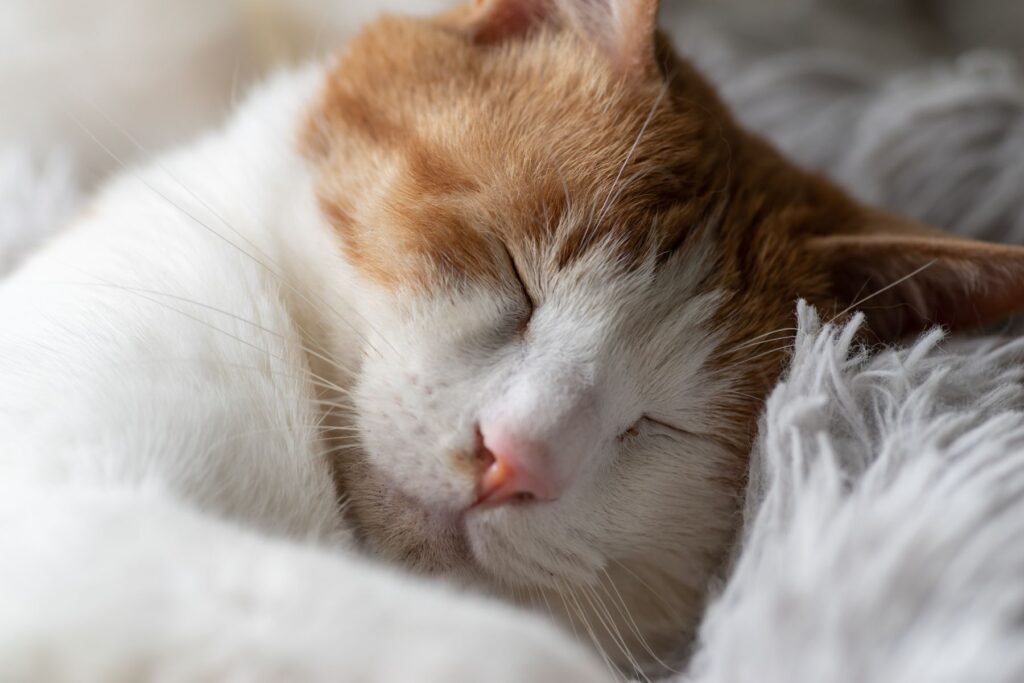Saying goodbye to your cat is one of the hardest decisions you’ll ever have to make. Our cats are more than just pets — they are family members who share our lives, our homes, and our hearts. As your cat ages or becomes ill, you may find yourself wondering when it’s time to let them go. This decision is deeply personal, and it’s normal to feel a mix of emotions, from grief to doubt. Cat euthanasia means helping your cat cross the rainbow bridge when they’re ready.
I’ve been a vet for 8 years, and in that time I’ve helped hundreds of pet parents say goodbye to loved family members. In this guide, we’ll walk you through the signs that it may be time, the options available when saying goodbye, and how to cope with the loss of your feline friend.
When is it time to put a cat down?
Deciding when to let your cat go is never easy, but there are signs that may indicate it’s time to put a cat down. If your cat is experiencing pain that cannot be managed with medication, has stopped eating, or no longer enjoys any of their usual activities, it might be time to discuss euthanasia with your vet. Cats living with chronic illnesses like kidney disease or arthritis may also reach a point where their quality of life is diminished, even with treatment.
Using a quality-of-life assessment tool can help you evaluate your cat’s wellbeing, giving you an objective way to see if they are suffering. Another tip I regularly give pet parents is that it’s time to put a cat down when they have “more bad days than good”. Lastly, remember it’s “better a day too early than a day too late”. Cat euthanasia is there to stop cats suffering, so it’s better to say goodbye when they’re still themselves, rather than when their illness means they’ve had to suffer.
What happens when a cat is put to sleep?
When it becomes clear that your cat’s quality of life is no longer what it used to be, euthanasia is often the kindest option. Though difficult, it ensures your cat doesn’t suffer a prolonged or painful natural death.
Cat euthanasia is a peaceful, pain-free way to help your cat pass. Your vet will first administer a sedative to help your cat relax and drift into a deep sleep. Once they are resting peacefully, an overdose of an anaesthetic is given, which stops their heart gently and without pain. You can choose to be present with your cat during the procedure if it feels right for you.

End-of-life decision making and choices
As your elderly cat nears the end of their life, you might want to think about some of the end-of-life choices you’ll want for them. This eases the burden when the day comes.
1. Cat euthanasia at home or in the clinic
You might want to think about whether to have your cat euthanised at home, or in the vet clinic, and talk to your vet about whether they offer this or whether to use a specialist home-visit end-of-life vet.
2. What about afterwards?
After your cat passes, you will need to decide what to do with their remains. Some options include:
- Home Burial: If you have space and local laws allow, you may wish to bury your cat at home in a special spot in the garden.
- Cremation: Most veterinary clinics can arrange cremation for your cat, either as a communal cremation or individual cremation where you can keep your cat’s ashes.
- Pet Cemetery: For those looking for a more formal resting place, pet cemeteries offer burial and cremation services in dedicated spaces.
Your vet will be able to guide you through the options and help you make the best decision for you and your cat.
3. Honouring your cat’s memory
Many people find comfort in creating a memorial for their cat. You could keep their ashes in a special place, plant a tree in their memory, or make a photo album celebrating their life. Some owners take paw prints or a lock of fur as a keepsake, while others write letters or journal about their memories. Whatever feels right for you is the best way to honour your cat’s memory. You might also want to think about what sort of mementoes you might want to keep from your cat, such as:
- Clippings of fur
- Paw prints
- Their ashes
All of which can be made into jewellery, artwork, or other lovely mementoes to help you remember your cat.
Having a think about these three things before your cat’s final days can make it easier to deal with when the time comes. Make sure you talk to your vet about any wishes you have for your cat’s euthanasia so they can help you.
Grief and Grieving
Losing a pet is incredibly hard, and it’s normal to feel a deep sense of grief. Cats are members of our families, and their loss can leave a significant emotional void. Everyone grieves differently—some may feel sadness, anger, or guilt, while others may experience relief that their pet is no longer suffering. It’s important to allow yourself time to process these emotions and not rush through them.
Support from family, friends, or even pet loss support groups can be invaluable during this time. There are also online resources and pet loss counsellors who can help you work through your feelings of grief – I particularly like these resources from the Blue Cross. Remember that grief is a personal journey, and there’s no right or wrong way to mourn the loss of a beloved pet.
Anticipatory grief
Some people may also experience anticipatory grief – which is when you start grieving before your cat’s passing. This is normal, and you should allow yourself to feel these feelings. As we’ve said, making plans can help you to feel more in control and make the process smoother. And, again, you should reach out for support even with anticipatory grief, especially if you’re struggling to cope with the thought of life without your cat.
Should I stay with my cat when they’re euthanised?
There’s a really common meme supposedly from a vet saying that pet owners should stay with their pets because it’s not fair on their pets otherwise. From this vet (and every vet I know) I’m here to say no – this is not true. While most pet owners do stay with their pet, some don’t, and this is absolutely fine. Your pet does not look for you in panic in their final moments, and we vets will take the same amount of care over your pet as if it was our own.
Whether or not you should stay with your cat at the end is a personal choice, and staying when you don’t feel able to is not a good idea. Your cat will pick up on your distress and is more likely to feel confused and scared if you stay when you don’t feel able to, so do what’s right for you, and your cat, in the moment. And it’s OK to change your mind too!
Conclusion
Cat euthanasia is an essential part of pet ownership – it’s a gift we can give our furry family members so they don’t feel pain and suffering. When your cat’s quality of life is no longer good, it’s time to think about saying goodbye. Making some plans and decisions ahead of time can help make the process smooth when the day does come. And last of all, please do reach out for support from friends, family, or specialist grief counsellors if you’re struggling with grief before or after your cat’s euthanasia. There’s no right or wrong way to grieve, but anyone that says they’re “just pets” is wrong – they’re our furry family members, and grief for them can be just as extreme – sometimes more so – as for people.
- Why Do Dogs Sleep So Much? A Vet Explains What’s Normal (and What’s Not) - March 27, 2025
- 10 Signs Your Dog Needs Probiotics – Vet Explains When to Supplement - March 14, 2025
- The dog gut microbiome explained (by a vet) - March 10, 2025


